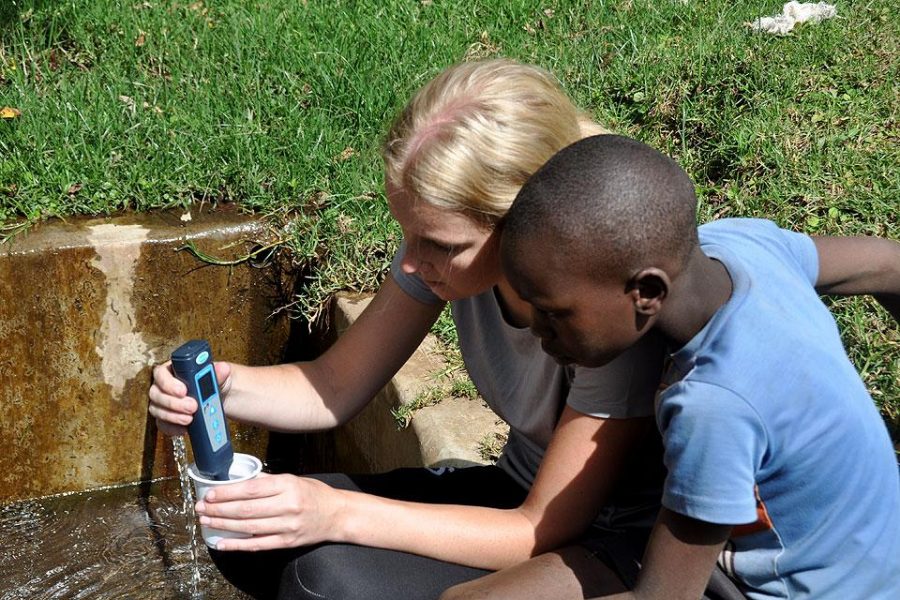Almost a year after Joplin was hit, new safety measures are put in place
April showers might bring May flowers, but they also bring dangerous weather. With spring in full swing in Missouri the probability for severe storms increases. Almost a year after the devastating storm hit Joplin, Mo., the state and Saint Louis University are taking more precautions to ensure the safety of residents during severe weather. Saint Louis University has an emergency plan for such conditions; it is important that students also know what causes these weather conditions and how to act in situations like these.
In response to Joplin, the Midwest National Weather Service has been testing new ways of advertising the anticipated impacts of storms.
This new warnings are designed to inform people of what a storm may be capable of doing before it hits, to encourage as many to seek shelter as possible and prevent deaths.
The old watch and warning system will still be used, in addition to the impact-based warnings. The difference is, the more detailed warnings will only be used if the storm is determined to have the capability of destruction. The difference between knowing what to do in a storm watch and warning can me the difference in life and death.
According to the National Weather Service, a thunderstorm watch is issued when hail of 1-inch diameter or damaging winds are expected in a three to eight hour period. These watches are issued for areas that can be up to the size of Iowa, however if a storm is expected to be short lived or only affect a small area a watch will not be issued. A thunderstorm warning means that the dangerous winds, hail, or flooding rains are currently happening.
A tornado watch is issued by the National Weather Service when there is a possibility of multiple tornadoes. This is a situation in which it is important to pay attention to the weather and be prepared for a warning. A warning means that a funnel has touched down in the area. This change from a watch to a warning is instantaneous and if action is not taken as soon as possible the situation can become deadly.
Last August, Saint Louis University was awarded the title of “Storm Ready University” by the National Weather Service.
To receive this award the school met certain safety criteria such as establishing a number of ways to alert the community to warnings in a timely fashion, utilizing trained tornado spotters on campus, officiating annual weather safety talks and visits from the National Weather Service, and having an organized safety procedure.
The Department of Public Safety sends out emails to the SLU community when a watch or warning has been issued and their website has information on how to prepare for a tornado on campus. They suggest that students are alert to changing weather conditions and explain the danger signs of tornadoes: a dark green sky, large hail, rotating large low-lying clouds and a loud roar like that of a freight train.
The website also outlines where to take shelter both indoors and out. Indoors, students will go one of the many designated areas around campus, typically a basement of a dormitory or apartment. If this is impossible, such as locations in the Student Village, it is suggested students take shelter in the most interior room and take cover in a bathroom or closet. If outside, shelter should be taken in a nearby building or ditch.
Tornadoes develop when warm air from the ground travels upwards towards a thunderstorm cell. The rising air increases in speed and changes direction, causing a vortex to start, creating an invisible spinning effect in the lower atmosphere. When the lower portion of a thunderstorm cloud vortex moves towards the ground, that is when tornado warnings are issued.
The University of Missouri Climate Center reports that an average of 30 tornadoes occur each year; the majority of which take place in the month of May. These storms can happen at any time of day, however Climate Center reports that many of the tornado producing storms occur between 4 and 6 p.m.
While Missouri only ranks number seven in the nation for frequencies in tornadoes the potential leads to dangerous weather conditions that people need to be aware of. When living in the Midwest it is important to know the dangers of the unexpected weather patterns. The constant changes in temperature and humidity put Missouri in danger of an estimated 50 severe thunderstorms and 30 tornadoes a year.
It is important for students to know what safety measures to take in these storm conditions and what to expect. Saint Louis University continues to do it’s best to keep students safe but ultimately the final responsibility lays in the students hands: stay safe and informed in this storm season.






